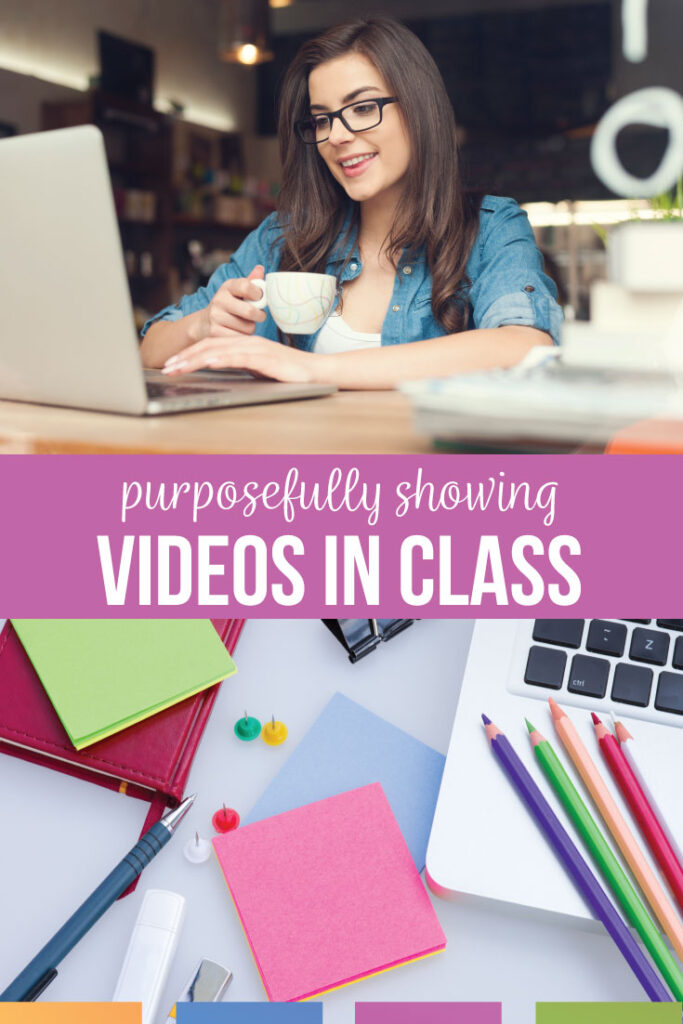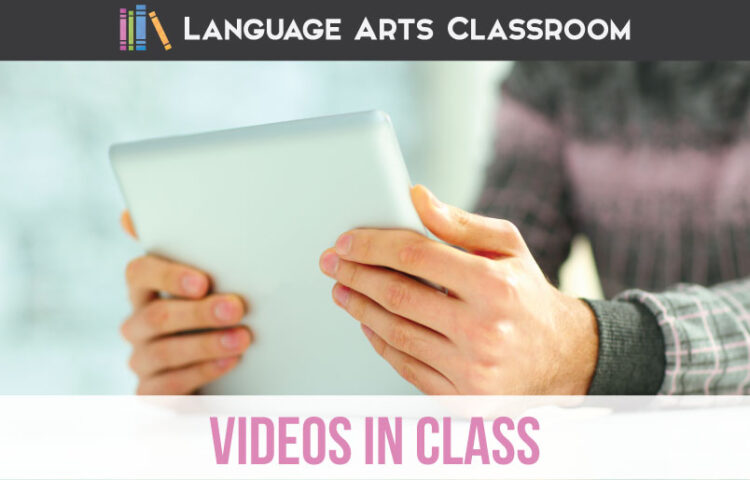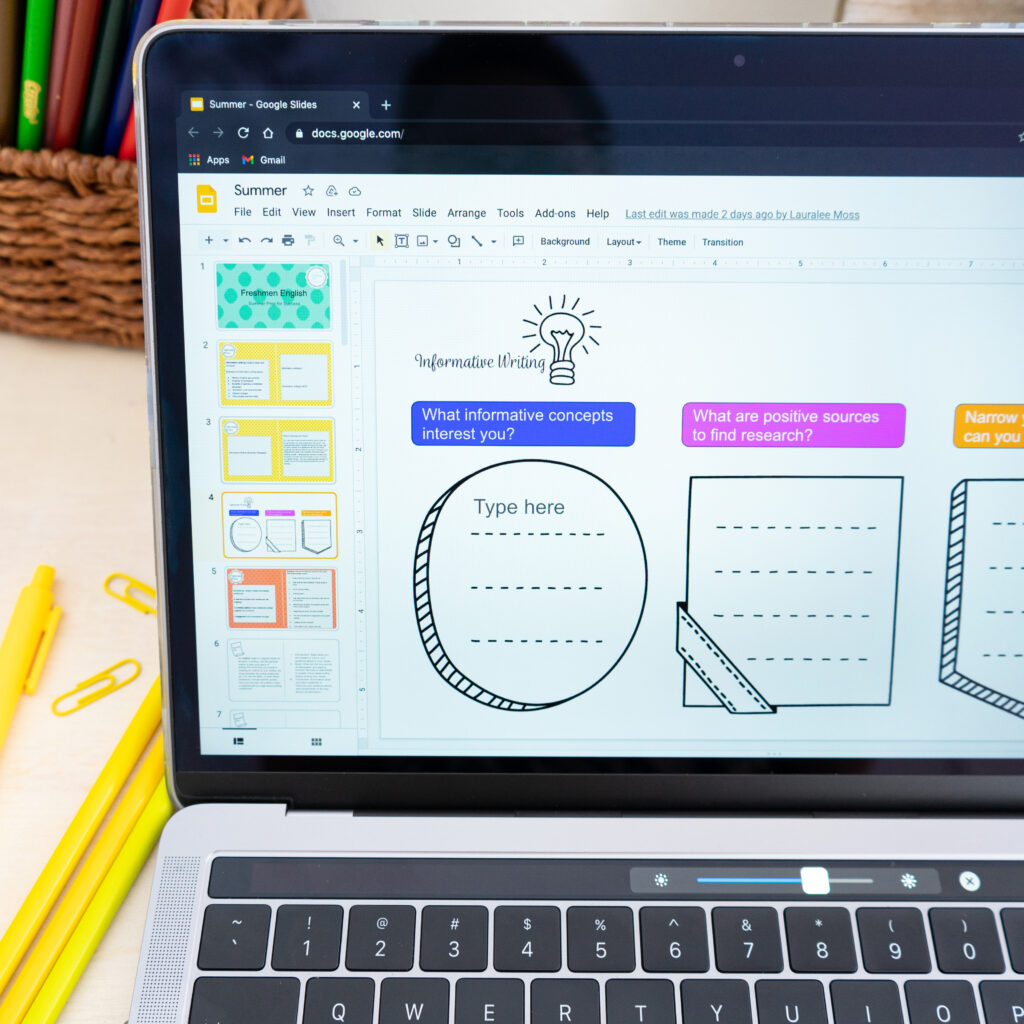Showing videos in class? You probably will at some time. Consider these ideas so that the videos are not simply class fillers.
I do not regularly show entire movies to a class. I have, sure. For instance, when I taught The Hunger Games, my students and I saw the film at theaters. My first years of teaching, my emergency sub plan was a movie and a movie guide.
The biggest change in showing videos in class has been my intent. Where I once used movies as part of a theme or unit, I now use videos to support the lessons. I am intentional in showing students that large businesses spend money to market to them.
Different classes call for different tools, and videos are merely a tool. Today, I use fewer videos than I once did. I also spend more time asking students to think about they videos we watch. Below, I’m reflecting on how I purposefully show videos in the classroom.

Show clips.
You read a book, and the book inspired a movie. Don’t show the entire movie—show clips. The pieces of the movie can support understanding for a difficult part or provide a different interpretation than what students have.
Something I did recently with Of Mice and Men was to discuss how students would approach the filming of a scene. What angle would they want the actors to have? I asked students to develop their interpretation. Then, we watched a few clips of the movie. This encouraged thinking about perspectives and liberties with scripts.
Use videos as guidance.
This year, I taught Romeo and Juliet in a new format. (I hope to blog about it soon.) I did not want to show the entire movie without interaction and thought, so I switched the approach with My Shakespeare and their interviews. Why would someone interview these characters? What would their reactions be?
Students had to adjust to the new approach to an old play, but after watching a few character interviews, they developed opinions. Friar Lawrence was perfectly cast. Most students liked Romeo, but many questioned Juliet’s costume. They understood what she was in white, but the outfit was not right. (I actually agree.)
Basically, the pieces were part of our lesson, not the entire lesson. We looked at the play, we watched the interviews, and we evaluated both— together.
Notice the surroundings.
If you watch a clip, commercials will greet you as you begin. Talk to your students about these commercials.
Imagine you pull up YouTube. You will probably be logged into your teacher account. Talk with students:
- What ad played before the actual clip began? For instance, air freshener commercials played on my account recently – why? Students remarked that I’m a mom, a teacher, an adult – people who own areas that need air fresheners.
- Are the commercials they would see different from mine? (Yes.) Why? How do advertisers market consumers?
- What is over to the side? (More advertisements, subscription requests, history.) Take the opportunity to remind students that their information and their viewing preferences are not private.
Students might know all of this information; they probably do! But! They need to actively think about themselves as consumers. The Internet certainly does.
Students should watch all videos (advertisements, shows, news) with a critical eye. Take the opportunity to model critical thinking for them. Incorporate videos as part of a lesson instead of simply making them the lesson. Media literacy must be part of their learning.
As always, there is more than one way to teach ELA. If you’re looking for more inspiration, Reading and Writing Haven has you covered. Here’s how she uses movies in the classroom.


